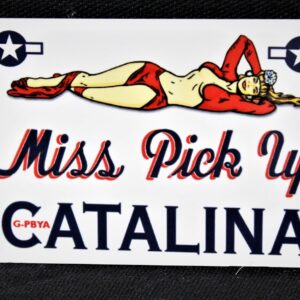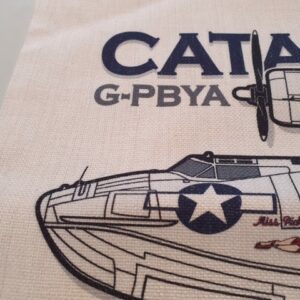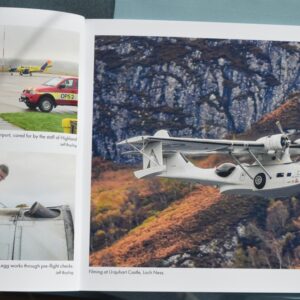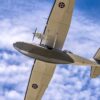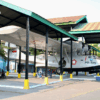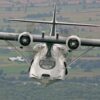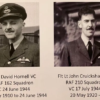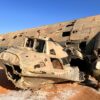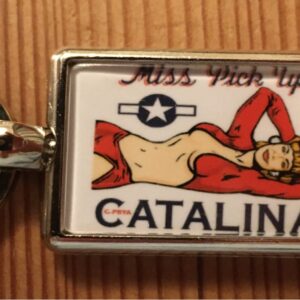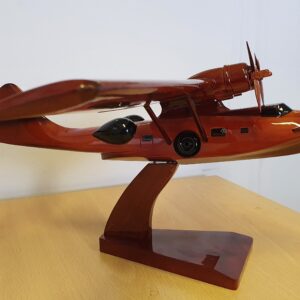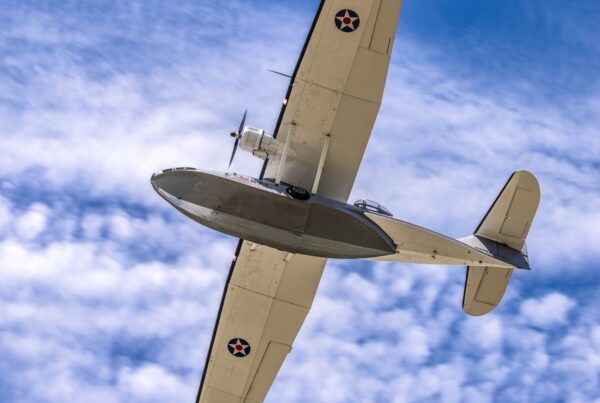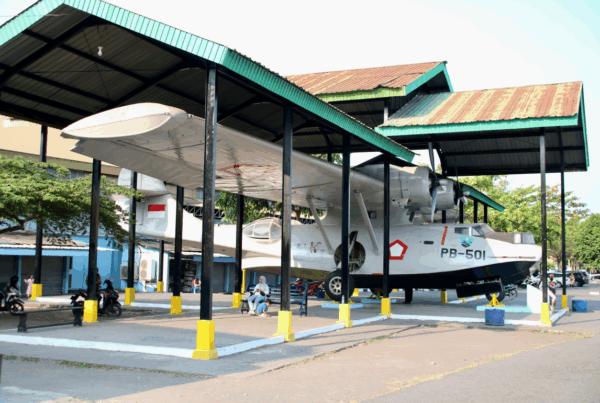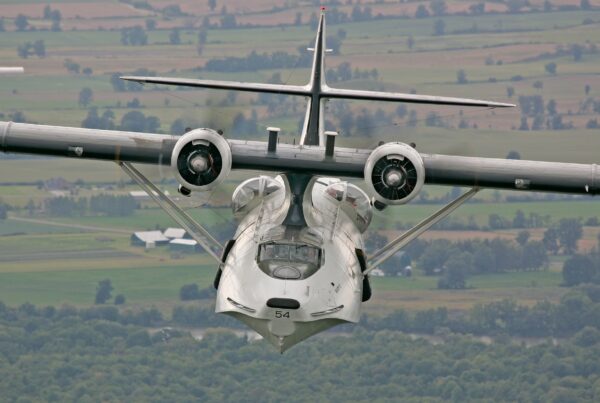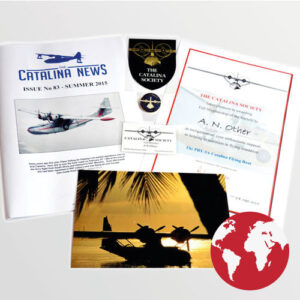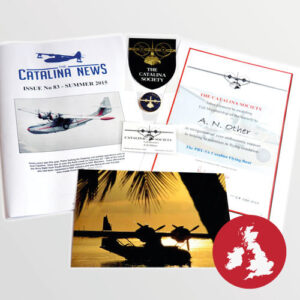In this latest bumper round-up of news about Catalinas around the world, we feature aircraft as far afield as Russia, Australia and New Zealand, Canada and the USA. The article is reproduced from the latest edition of The Catalina News, the print magazine sent to subscribing members of The Catalina Society.
From time to time, a surviving Catalina will go ‘missing’! Such was the case with the PBY-5A last registered in the USA as N4582U. Originally bult by Consolidated in San Diego for the US Navy as BuNo 46457 and with the manufacturer’s hull number 1821, it saw wartime service with the patrol squadron VP-/VPB-94 before being stricken from strength at the end of February 1945 having been diverted to the Força Aérea Brasileira (Brazilian Air Force) in late-1944. Initially given the serial FAB 11, it later became 6510 and remained in service in Brazil until retired in December 1981. It was sold in the USA, registered N4582U and flown to Albuquerque, New Mexico where for some years it was displayed in the open at the Rescue Memorial Museum, Kirtland Air Force Base. At various times it was painted as a USAF A-10A Catalina serial 44-34077 and PBY-5A 46457. It never flew again after the ferry flight from Brazil and its US registration was cancelled in a paperwork ‘tidy up’ by the US FAA on December 3rd, 2014. During at least some of its time in New Mexico, it had remained in the ownership of its purchaser, Project Catalina, but it was subsequently sold to the National Museum of the US Air Force in an undated Bill of Sale. At this point, the history is somewhat hazy. It is known to have been sold to one Roger B Kelsay of Hillsboro, Oregon on September 26th, 2016 and then to an owner registered as JG-5 LLC of Cave Creek, Arizona the following December. The Catalina was subsequently dismantled and moved from Kirtland AFB to an unknown location believed to be somewhere in San Antonio, Texas. Intriguingly, the FAA noted that the Catalina has been cancelled as ‘exported to the Russian Federation’!
The Catalina then turned up at New Smyrna Beach in Florida where it was worked on by Catalina specialists American Aero Services. Then it disappeared again and, whilst I have been unable to discover how and when it travelled, it reappeared in early-2021 at the UMMC Museum, Verkhnyaya Pyshma, Sverdlovsk, Russia. In no time at all it had been repainted in a colour scheme to represent a wartime Soviet PBY-6A or PBN-1 Nomad – this may in fact have been done at New Smyrna Beach before the Catalina departed for Russia. The PBY is now the largest exhibit at the museum where it is housed under cover. The UMMC Museum is a social project founded by the Ural Mining and Metallurgical Company (UMMC) in order to preserve the memory of Russia’s heroic past as well as educate modern youth on patriotism and valour. This is the only complete surviving Catalina of any sort in the former Soviet Union and although no PBY-5A models were operated there it is appropriate that there should be one there now.
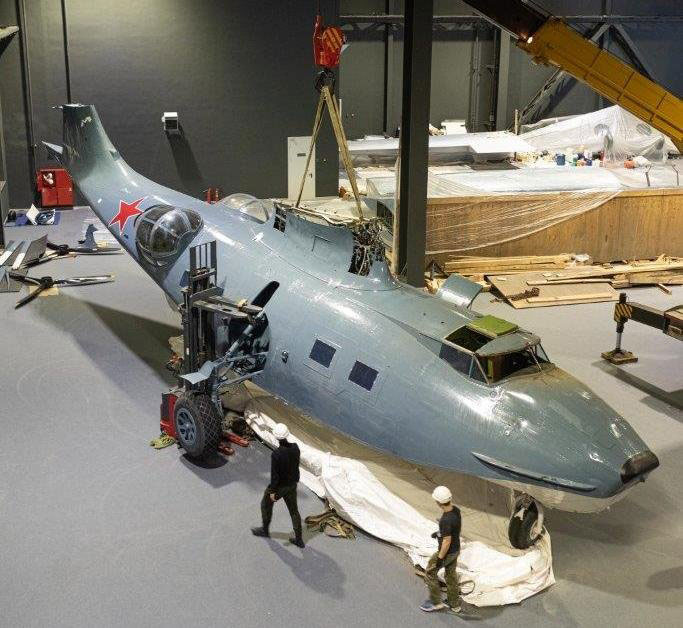
The newly arrived PBY-5A in the UMMC Museum, Verkhnyaya Pyshma, Sverdlovsk, Russia as she is prepared for display
In Australia, the PBY-6A Catalina VH-PBZ flown by Historic Aircraft Restoration Society (HARS) from Shellharbour Airport at Albion Park between Nowra and Wollongong in New South Wales has been less active than usual due to Coronavirus which has caused the HARS museum to shut down. However, it was airborne on March 31st this year when it overflew the Australian capital Canberra to mark the RAAF’s centenary. HARS provide no less than six aircar ft for the flypast – Douglas C-47, de Havilland Canada Caribou, Lockheed Neptune and Orion, Bell Huey and, of course, Felix their Catalina. Over the years, this Catalina has had an eyeball turret and rear hull blisters re-installed as well as a host of internal features. Sadly, she no longer operates from water.
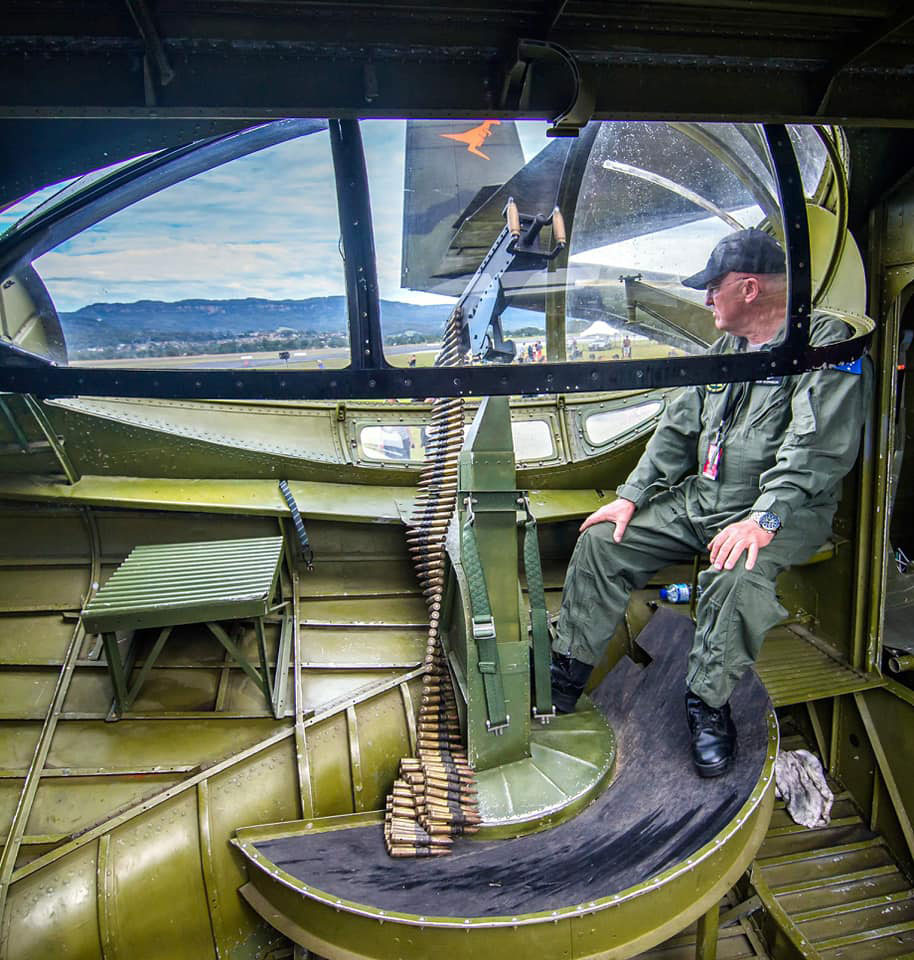
The superb interior of the HARS PBY-6A VH-PBZ with Observer Bob Morrison on the look-out. Photo: HARS
Meanwhile, at the Catalina Flying Memorial Ltd project at Bankstown, Sydney, NSW work on the huge task of getting another PBY-6A Catalina VH-CAT flying continues. Sadly, the project’s founder, Chair and driving force, Philip Dulhunty, passed away on November 29th last year at the grand age of 96 (check out his Wikipedia entry and read about his varied and interesting life). Phil’s passing will require a restructure of the organisation’s management, but Director Mike Boyce has pledged to continue the work on VH-CAT through his association with the Coral Sea Catalina Heritage Museum and has expressed confidence that VH-CAT will fly again. The plan is that eventually the Catalina will form a centrepiece of the proposed museum at Bowen Airport, a town very closely associated with the wartime operation of RAAF Catalinas.
Still in Australia, there are changes afoot at the Rathmines Catalina Memorial Park Association (RCMPA) Catalina project. Work continues on the restoration of its PBY-5A Catalina, ex-N7238Z and originally US Navy Bu No 48412, in the Kilaben Bay area, Lake Macquarie, NSW but the RCMPA released a significant media statement on September 4th. This announced that it has negotiated a new home for the Catalina, known as Our Girl. They stated: ‘Negotiations to gain approval to site and house Our Girl at Rathmines were not progressing at a pace, or direction, that would meet RCMPA’s timeframe to complete the restoration and provide a suitable facility in which to display her. As a result, we intend to relocate Our Girl from Kilaben Bay to the RAAF Williamtown Aviation Heritage Centre, where she will form part of the display. We wish to thank Air Force for their support in providing this outcome. The relocation will not happen for some time. There is a pre-existing unrelated project underway to upgrade the RAAF Williamtown Aviation Heritage Centre. Therefore, the Our Girl move is planned to occur once the upgrading of existing facilities at the Williamtown centre are completed. We are pleased that as a result of this agreement with Air Force, Our Girl will remain in Newcastle. We consider this to be a wonderful outcome for the Association and the dedicated volunteers completing the restoration. We will feature an update on Our Girl in our next magazine.
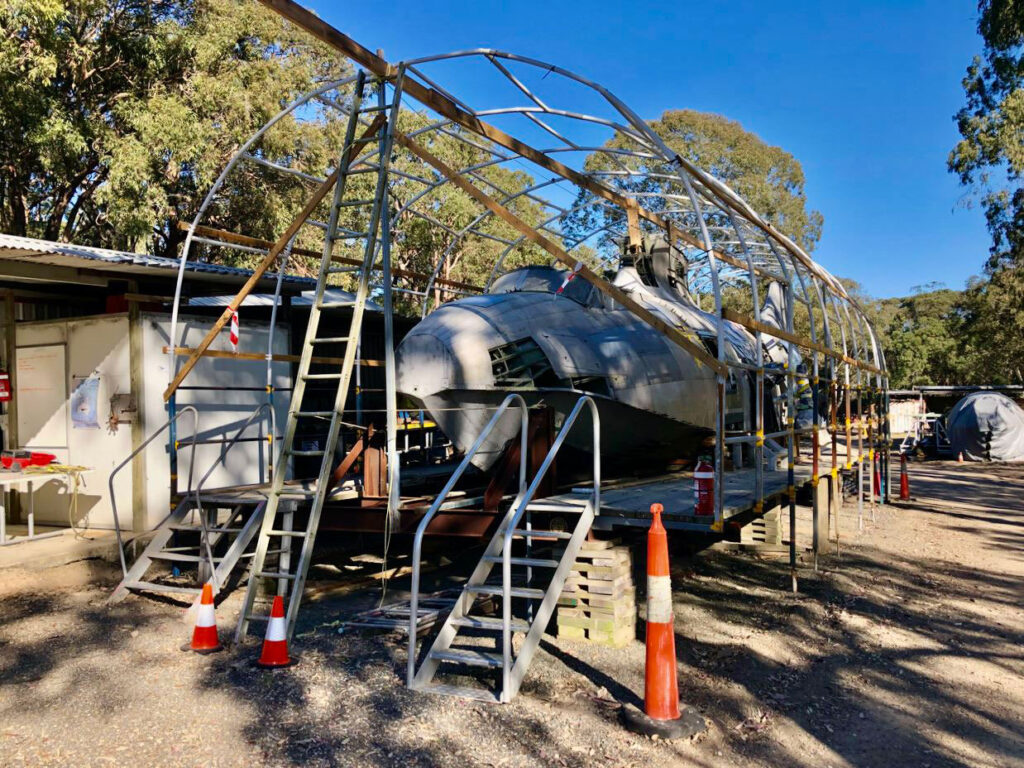
At some point the PBY-5A Catalina Our Girl with Rathmines Catalina Memorial Park Association (RCMPA) Catalina project will be moving to RAAF Williamtown. Meanwhile, work continues in the Kilaben area. Photo: RCMP
Further south, some news from New Zealand from Lawrence Acket. The NZ Catalina Preservation Society/Catalina Club of NZ Canso A ZK-PBY has had another ‘gap year’ in operations because of Coronavirus restrictions but there are hopes that it will reactivated for the 2022 season. The main event planned is an appearance at the Warbirds Over Wanaka show and attendance at some of the Ardmore warbird open days. There are hopes that ZK-PBY can also attend the Art Deco Festival at Napier in late-February. Meanwhile, she is being kept in airworthy condition at New Plymouth on North Island ready for when she can take to the air again. Recent work carried out has included overhauling the nosewheel oleo and shimmy dampener.
Back in Issue 93 of The Catalina News magazine, I reported that work on the restoration of one-time OA-10A Catalina VH-SBV in the Air Force Museum of New Zealand at Wigram on New Zealand’s South Island had been halted for the foreseeable future. The partially restored hull is however kept indoors and has had work done on it to keep it corrosion-free. A few months ago, the hull was briefly moved outside for the first time in many years before going back into the museum buildings. It has to be said that she looked good in her new coat of white paint and with bow and blister turrets in place. Despite the slow rate of restoration, she has come a long way since being rescued many years back from the fire dump at Port Moresby, PNG!
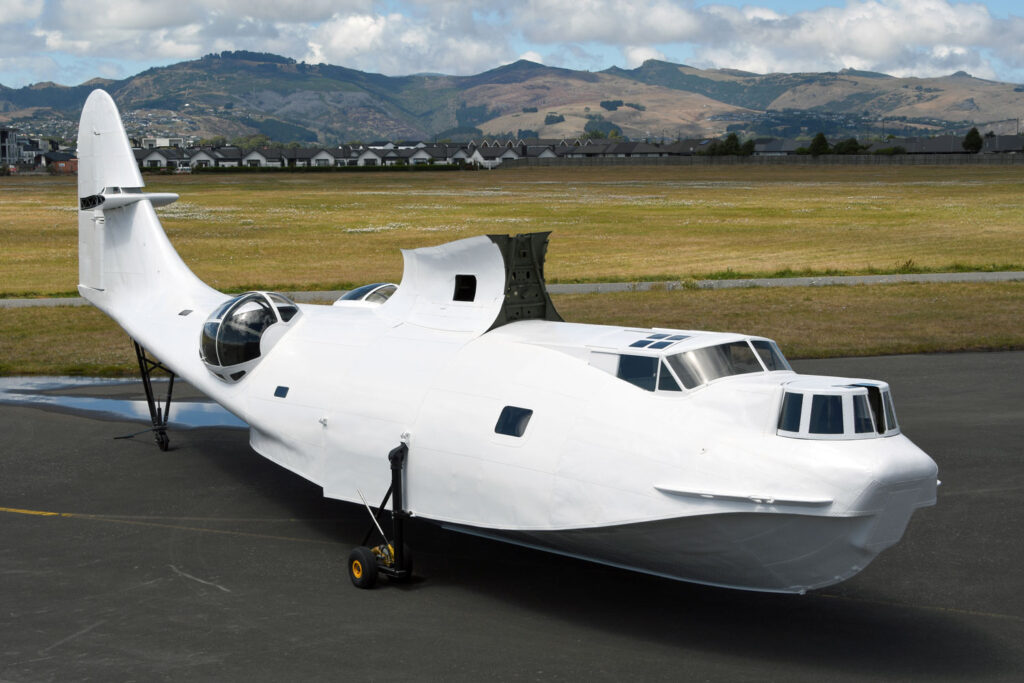
Although far from a complete restoration, the hull of the Royal Air Force Museum of New Zealand Catalina was looking great when temporarily out in the open recently. She is now back in storage. Photo: RAFMNZ
As mentioned in the tribute to Andy Carswell in Issue 96 of The Catalina News magazine, the port side bow and cockpit section of a Catalina has been placed on display outside The Andy Carswell Building – Canso Campus at the Veterans’ House in Ottawa, Ontario. The Veterans’ House provides housing for homeless ex-servicemen and is built on the former site of the Rockcliffe Royal Canadian Air Force airbase, once home to RCAF Canso amphibians! The nose section came from PBY-5A N68756 which, as previously reported in these pages, had been cut up for artefacts by MotoArt/Planetags of El Segundo, California after the badly corroded and damaged hull had been deemed unfit for restoration. Its previous home was in the storage yard of the Pima Air & Space Museum in the Arizona desert. MotoArt restored the exterior of the nose section before it went to Canada in late-April and painted it in silver with the word ‘RESCUE’ painted in large letters to resemble the Canso A amphibians that Andy Carswell flew in the RCAF. It is good to know that a substantial part of N68756 has been saved and in such an appropriate place.
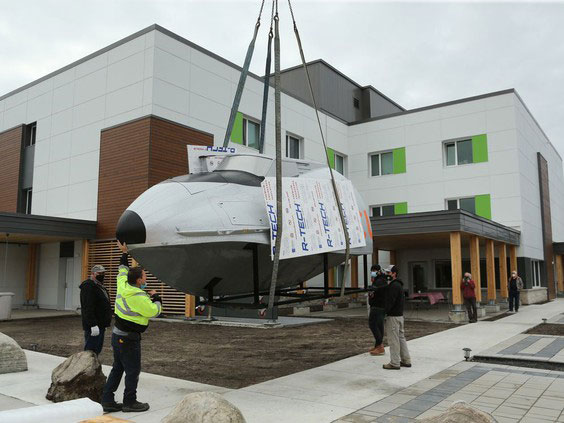
The PBY-5A cockpit section from the former N68756 is lowered into place at its new home at Ottawa’s Veterans’ House. Photo: Jean Levac/Ottawa Citizen
Talking of the Pima Storage yard, the population of PBY and canso hulks there has been further diminished by the acquisition of two by Soaring By The Sea LLC, owner/operators of the airworthy Canso A N9767. I reported in our last issue that they had acquired the stripped hull of Canso A, 9829 or 9839 (precise identity now known) but subsequently it was confirmed that they had also taken on the damaged and badly corroded hull of PBY-5A N10609. Both were loaded onto huge flatbed trucks and roaded all the way from Arizona to Soaring’s base at Eugene, Oregon, departing on 27th February and arriving on March 1st. Peter Houghton, speaking for the new owners, advised that as many usable parts as possible will be salvaged as spares to keep N9767 flying. The nose section from the former Canso will be used to get the bombardier’s glass and turret back onto N9767 at some point and its bulkheads and ring frames will be put into store in case they are needed at some future point. It sounds as if there will not be too much left once parts recovery is completed. More on the activity at Soaring By The Sea in our next magazine.
News on yet another Canso A, also in Canada, concerns the airworthy Canadian Warplane Heritage (CWH) example C-FPQL Mary K. She has not been flying a great deal this year for the reasons we have all got used to but she did perform at the Canadian International Air Show along the Toronto waterfront on the first weekend of September 4th and 5th. Apparently, this was the first time that the CWH have flown at the event for some years but the Canso was greatly appreciated so hopefully she will become a regular.
Hans Lauridsen has placed his entire Lauridsen Aviation Museum collection of aircraft on the market with a preference to sell all of them as one lot. Within the collection at Buckeye Airport in Arizona is former RCAF Canso A N413PB. It has not flown for some years and has been kept outside in the dry Arizona climate. In commercial life, it spent many years from 1962 as a waterbomber with the Newfoundland and Labrador government flying as CF-OFI, later C-FOFI, tanker number 3/703. It sank in an accident at Goose Bay in May 1985 but was salvaged to fly again. It later passed through the hands of brokers Hicks & Lawrence of St Thomas, Ontario then well-known firefighting firm Buffalo Airways before being acquired by Lauridsen and flown to Glendale, Arizona in October 2005. It later moved to its current home at Buckeye. I will report on any further news when I hear it!







